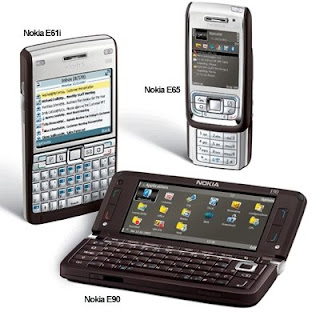In the year gone by, there has not been a single day when one would not have heard the word '3G' (used to denote third generation spectrum) rattling on the news channels. From its delay to its pricing to its allotments – almost everything has become a matter of controversy. And this controversy, coupled with the hype, is ensuring that everyone in India is aware that we are soon going to embrace this new technology, which would drastically transform our mobile experience. Well, most people are still wondering when we would exactly be able to experience the might of 3G. But then there are also others who are worried about larger issues such as, what exactly this 3G thing is all about, how it is different from WiMAX and how it has the potential to drastically enhance their mobile telephonic experience in the times to come? TSI presents a ready reckoner for the same.
to its allotments – almost everything has become a matter of controversy. And this controversy, coupled with the hype, is ensuring that everyone in India is aware that we are soon going to embrace this new technology, which would drastically transform our mobile experience. Well, most people are still wondering when we would exactly be able to experience the might of 3G. But then there are also others who are worried about larger issues such as, what exactly this 3G thing is all about, how it is different from WiMAX and how it has the potential to drastically enhance their mobile telephonic experience in the times to come? TSI presents a ready reckoner for the same.
As most people are aware, 3G stands for third generation spectrum. India is currently operating on a 2.5G. In layman’s language, all 3G would do is to enlarge the current pipe of spectrum, so that much more traffic and data can seamlessly pass through. “3G System represents the next step in evolution of mobile cellular communication. 2G systems in mobile cellular communications mainly focus on voice, while 3G systems support increased data communications and wireless broadband Internet access,” informs Nripendra Mishra, Chairman, TRAI . This makes us confront another big issue – how would the coming of 3G impact us as consumers? Looking from a more technical perspective, the factor that differentiates 3G and 2G networks is how quickly data can be sent and received. Industry experts state that 3G networks have the capability to send data up to 40 times the speed of earlier digital networks. And as 3G networks have markedly greater capacity along with better spectrum efficiency than 2G systems for mobile communications, it would enable the delivery of triple play converged communication services through wireless media. So subscribers of these services would have an instant access to their inbox, receive video calls, stream videos from YouTube, download music tracks and even watch live television shows on their mobile phone.....Continue
 to its allotments – almost everything has become a matter of controversy. And this controversy, coupled with the hype, is ensuring that everyone in India is aware that we are soon going to embrace this new technology, which would drastically transform our mobile experience. Well, most people are still wondering when we would exactly be able to experience the might of 3G. But then there are also others who are worried about larger issues such as, what exactly this 3G thing is all about, how it is different from WiMAX and how it has the potential to drastically enhance their mobile telephonic experience in the times to come? TSI presents a ready reckoner for the same.
to its allotments – almost everything has become a matter of controversy. And this controversy, coupled with the hype, is ensuring that everyone in India is aware that we are soon going to embrace this new technology, which would drastically transform our mobile experience. Well, most people are still wondering when we would exactly be able to experience the might of 3G. But then there are also others who are worried about larger issues such as, what exactly this 3G thing is all about, how it is different from WiMAX and how it has the potential to drastically enhance their mobile telephonic experience in the times to come? TSI presents a ready reckoner for the same.As most people are aware, 3G stands for third generation spectrum. India is currently operating on a 2.5G. In layman’s language, all 3G would do is to enlarge the current pipe of spectrum, so that much more traffic and data can seamlessly pass through. “3G System represents the next step in evolution of mobile cellular communication. 2G systems in mobile cellular communications mainly focus on voice, while 3G systems support increased data communications and wireless broadband Internet access,” informs Nripendra Mishra, Chairman, TRAI . This makes us confront another big issue – how would the coming of 3G impact us as consumers? Looking from a more technical perspective, the factor that differentiates 3G and 2G networks is how quickly data can be sent and received. Industry experts state that 3G networks have the capability to send data up to 40 times the speed of earlier digital networks. And as 3G networks have markedly greater capacity along with better spectrum efficiency than 2G systems for mobile communications, it would enable the delivery of triple play converged communication services through wireless media. So subscribers of these services would have an instant access to their inbox, receive video calls, stream videos from YouTube, download music tracks and even watch live television shows on their mobile phone.....Continue